An infographic illustrating mass incarceration
mass incarceration

We don’t know what prompted Rev. Franklin Graham to log onto Facebook and pound out the words that lit a firestorm last week. But within one day, tens of thousands of his faithful followers liked and shared his short, patronizing post that called “Blacks, Whites, Latinos, and everybody else” to “Listen up” and tune in to his take on why so many black people have died at the hands of police officers recently. According to Graham, the problem is “simple.” It can be reduced to their lack of obedience and bad parenting.
By Monday morning, more than 80,000 people shared the post and almost 200,000 liked it. Sojourners’ Jim Wallis penned a strong response.
On Friday an evangelical pastor based in Oakland, Calif. (the birthplace of the Black Lives Matter movement), Dominique Gilliard, shared the post with a small diverse group of evangelical leaders who decided to craft a collective response. This open letter was crafted by the collective efforts of Rev. Leroy Barber (CCDA and Word Made Flesh), Gilliard (New Hope Oakland), Dr. Brian Bantum (Seattle Pacific University), Micky ScottBey Jones (Transform Network), Efrem Smith (World Impact) and me (Sojourners). We didn’t know if our words would resonate. We only knew the truth that we must speak in response to Graham’s outsized influence coupled with apparent ignorance. In the end, a broad representation of national evangelical leaders agreed to sign this letter to Graham as principal signatories.
We invite you to read it, discuss it in your churches, and add your name to the many who say “No more!” We will not tolerate this type of flippant, patronizing commentary from faith leaders on critical issues that mean life and death for many in the body of Christ and in communities across America. We won’t tolerate it, even one more day. Rather, we invite all with open hearts to enter into dialogue — and to join us in the ministry of the gospel — the ministry of reconciliation.
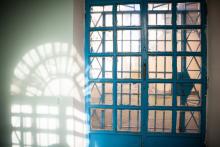
That is also us, the possibility of us, if the wonderful accident of our birth had taken place elsewhere: you could be the refugee, I could be the torturer. To face that truth is also our burden. After all, each of us has been the bystander, the reasonable person who just happens not to hear, not to speak, not to see those people, the invisible ones, those who live on the other side of the border. - Karen Connelly, The Lizard Cage
It was a little over two weeks ago that Marlo entered Atwood Hall here in Lexington federal prison. Nearly all the women here are nonviolent offenders. When I first saw Marlo, her eyes seemed glued to the tiled floors as she shuffled along hallways. I guessed her age to be 25 or so. A few days later, she came to a choir rehearsal. She was still shy, but she looked up and offered a quiet smile when she joined the soprano section. The next time our choir gathered, Marlo raised her hand before we ended our rehearsal. "I got something to say," she said, as she stood. "When I first came here, I can tell all of you now, I was terrified. Just plain terrified. I have 70 months, and I felt so scared." The intake process for this, her introduction to the prison system, had badly frightened her, but before sundown that same day, a second intake process had occurred, with several inmates finding her, reassuring her, and getting her beyond that first panic.
During my four stints in U.S. federal prisons, I've witnessed long-term inmates' unconquerably humane response when a newcomer arrives. An unscripted choreography occurs, and the new prisoner finds that other women will help her through the trauma of adjustment to being locked up for many months or years. Halfway through a 3-month sentence myself, I'm saddened to realize that I'll very likely adapt to an outside world for which these women, and prisoners throughout the U.S. prison system, are often completely invisible.
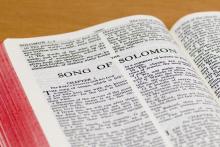
I am black, but [AND] comely, O ye daughters of Jerusalem, as the tents of Kedar, as the curtains of Solomon. Look not upon me, because I am black, because the sun hath looked upon me: my mother's children were angry with me; they made me the keeper of the vineyards; but mine own vineyard have I not kept. Song of Songs 1: 5-6
As the Executive Director for Faith in New York, an affiliate of the PICO National Network, I organize faith communities to take action for justice concerning issues that threaten the health of our communities. One of our campaigns is Live Free New York, which is a part of a national movement in which people of faith are working to end mass incarceration, gun violence, and police brutality through policy change and direct action.
Mass incarceration is an issue with many tentacles, and in New York, one tentacle is school suspension rates that are through the roof for black children. What many in the black community don’t understand is that according to data from the Office for Civil Rights at the U.S. Department of Education, as presented in a recent New York Times article: “black girls in public elementary and secondary schools nationwide are suspended at a rate of 12 percent compared with a rate of just 2 percent for white girls and more than girls of any race or ethnicity. … An analysis by Villanova [University] researchers of data from the National Longitudinal Surveys of Youth and the National Longitudinal Study of Adolescent Health indicated that black girls with the darkest skin tones were three times more likely to be suspended than black girls with the lightest skin.”
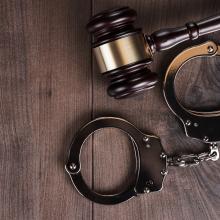
On a July afternoon in 1995, a 33-year-old man named Curtis Wilkerson walked into a store, stole one pair of socks, and was promptly arrested. This wasn’t Wilkerson’s first crime, but it was surprising, considering his long streak of good behavior. The last time he was trouble with the law was when he was in his teens, after two offenses for abetting robbery. He was sentenced to six years.
After his release from that sentence, Wilkerson cleaned his life up. Instead of running the streets for money, he drove a forklift. All things considered, he was a “success story,” earnestly walking that “straight and narrow” path — up until, that is, those gorgeous socks waved his way.
Why he did it remains a mystery. But since I was once an angsty teenage shoplifter, I imagine he was probably just bored. Hungry for a momentary thrill. An innocent-ish high. I imagine him thinking, it’s just a pair of socks. $2.50. Not much more than a pack of gum.
But be it socks or a Chevy Silverado, the state of California did not care. Shortly following his arrest, he was brought before a judge and sentenced to life in prison.
In California, the three-strikes law was the law of the land. A type of mandatory minimum sentencing law, the law required judges to punish defendants guilty of their third felony with 25 years to life in prison. Stolen socks, most of the time, would’ve counted as a misdemeanor. But, and likely because he was black, Wilkerson was charged with a felony, his third strike. And consequently, was given the harshest punishment in the history of stolen socks.
In 2012, California voters approved a measure to reform the law, making mandatory life sentences only applicable to “serious” felonies, but even still, Wilkerson remains behind bars.
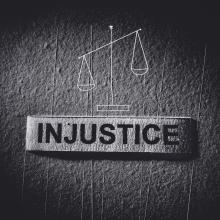
Black Future Month, a term coined by the new black vanguard, seeks to build upon the robust legacy of our foreparents while refusing to nostalgically rest upon their laurels. Black Future Month affirms our collective history of struggle, resilience, and achievement, while centering our present predicament in all its urgency. As this movement progresses, it’ll be imperative that we retain the spiritual foundation which anchored the freedom fighting of our ancestors,’ but this retention cannot come at the expense of passing the baton off to emerging leadership. We must go forward together, acknowledging that we need the collective wisdom of our people to navigate the troubled waters that surround us on all sides.
Black Future Month emerges from the #BlackLivesMater movement and the awareness that we’re in the midst of a watershed moment. There are currently “more African-American adults under correctional control, in prison or jail, on probation or parole, than were enslaved in 1850, a decade before the Civil War.” Black people currently constitute 12 percent of our nation’s populace, yet represent 40 percent of the nation’s incarcerated population. It’s estimated that 1 in every 3 black males will serve time in jail or prison in their lifetime and that 1 in 13 black people cannot vote due to felon disenfranchisement. As bleak as these realities are, mass incarceration is just a portion of the burden we’re bearing.
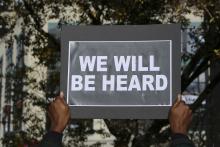
I cringed. Recently, I sat watching a cable news broadcast — can’t remember which one. What I do remember is it featured people doing good in the world … and it made me cringe.
Lots of people were highlighted, but the two young black people they featured both shared the same general narrative: So and so had a hard life. He came from poverty. She came from abuse or neglect. But they rose above. Now look at all they’ve accomplished. It was striking. None of the stories of white people started with this narrative. Rather, theirs usually went something like: Little Suzy or Johnny took a class project and turned it into a major non-profit that helps thousands of orphans … in Africa.
No matter where you tuned into this broadcast, blackness unconsciously was associated with hardship and overcoming while whiteness was associated with genius and compassion.
I sat there thinking: The truth is we have had centuries of hardship to press through. Our history is present, the good and the bad. As in Toni Morrison’s Beloved, the ghost of slavery haunts us. It affects our present. But it’s not just the past that haunts us. It is the same basic oppression of yesteryear —confinement, control, and disregard for black lives. So, it makes sense that the stories of our overcomers are as potent in current-day narratives as they are in history.
Jackie Robinson, Joe Lewis, Paul Robeson, Zora Neale Hurston, Billie Holiday, were the overcomers of our past. The black children in that broadcast were the overcomers of our present.
But what about the black future? One hundred years from now, will my family’s descendants still have to watch featured stories of black people doing good that always begins: So and so had a hard life?
During Black History Month we typically look back on all the accomplishments of those who paved the road for generations to come. But this month, we have been inspired by the #BlackLivesMatter movement to look forward to another kind of future for black men, women, and children.
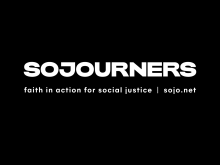
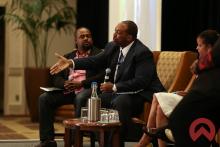
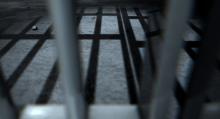
The Bureau of Prisons contacted me today, assigning me a prison number and a new address: for the next 90 days, beginning tomorrow, I’ll live at FMC Lexington, in the satellite prison camp for women, adjacent to Lexington’s federal medical center for men. Very early tomorrow morning, Buddy Bell, Cassandra Dixon, and Paco and Silver, two house guests whom we first met in protests on South Korea’s Jeju Island, will travel with me to Kentucky and deliver me to the satellite women’s prison outside the Federal Medical Center for men.
In December 2014, Judge Matt Whitworth sentenced me to three months in federal prison after Georgia Walker and I had attempted to deliver a loaf of bread and a letter to the commander of Whiteman Air Force base, asking him to stop his troops from piloting lethal drone flights over Afghanistan from within the base. Judge Whitworth allowed me more than a month to surrender myself to prison; but whether you are a soldier or a civilian, a target or an unlucky bystander, you can’t surrender to a drone.
When I was imprisoned at Lexington prison in 1988, after a federal magistrate in Missouri sentenced me to one year for planting corn on nuclear missile silo sites, other women prisoners playfully nicknamed me “Missiles.” One of my sisters reliably made me laugh today, texting me to ask if I thought the women this time would call me “Drones.”
It’s good to laugh and feel camaraderie before heading into prison. For someone like me, very nearly saturated in “white privilege” through much of this arrest, trial, and sentencing process, 90 percent (or more) of my experience will likely depend on attitude.
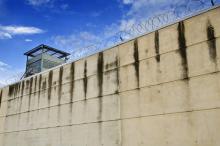
This reading of Isaiah 40 may make it more difficult for many of us to relate to the ancient historical setting of the text. There are many among us, however, who are refugees, forced to migrate to find economic opportunity or even because of poor decisions or systemic injustice that forces a disproportionate amount of our minority population into the prison system. Bereft of personal and economic freedom, our nation’s prison population might find both hope and justice in these words from the ancient prophetic text.
There is no doubt that many in our nation’s prison have committed crimes, just as the ancient people of Judah did according to Isaiah 1. There is also no doubt that we need a system of incarceration that separates dangerous criminals from potential victims. But the words concerning disproportionate judgment also call us to question the fairness of our current system in the United States, which boasts the largest prison population in the world at 2.2 million.
Moreover, just as God did not give up on the people of Judah, God has not given up on those in the prison system. What would happen if we as Christians partnered with God to help transform lives and offer hope to the women and men who fill our prisons?
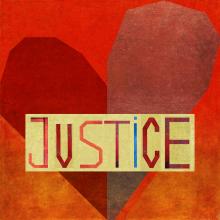
I am a professor of religion at a small liberal arts college in Decorah, Iowa. For the last two weeks in my Religion 239: Clamoring for Change course, students and I have been reading the book Occupy Religion: Theology of the Multitude. We have been discussing the issue of “justice,” and we have been playing with an image of God as one who works from the bottom-up on behalf of many rather than one who works from the top-down on behalf of a few.
A fundamental principle within this “bottom-up” theology is the idea of God taking sides (a view quite common in most of the “liberative” theologies). Many people, however, are often uncomfortable with the idea of God taking sides. They often assert that such an image contradicts the idea of an impartial and all-loving God who cares equally for all people.
A bottom-up theology of God asserts that God is a God who exists in relationship with all of creation at the same time every created thing is in relationship with every other created thing. While the relationships that involve human beings may be governed by several principles, I believe one principle that governs all human relationships is the principle of “justice.”
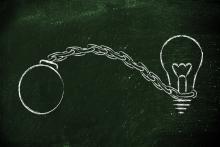
September is often associated with the celebratory beginning of a new school year. It’s a time of hopeful anticipation for students, parents, and teachers filled with new school supplies and new friends.
In many communities, however, the beginning of the school year is a cause for concern and anxiety.
Instead of hallways filled with artwork and sports trophies, many students will walk into prison-like environments complete with metal detectors, and the presence of police and armed security officers. These officers have more than a chilling effect. They also have the authority to arrest students, often for minor misbehavior. When you couple the harshness of the school environment with zero tolerance policies that criminalize children’s non-violent infractions like being late to class, violating a dress code, or even chewing gum, one can begin to see the school discipline crisis.
The patchwork of overly harsh disciplinary policies that funnel children directly from the classroom to the juvenile justice system is referred to as the school-to-prison pipeline. In schools across America, students, especially students of color, who should be sent to the guidance counselor to find out what’s really wrong end up at the police station. These policies are expensive, unjust, and ineffective. They also lower academic achievement, lead to dropout, and do little to make schools safer.
Even more troubling, we find that the rules are different for children of color, who are punished more often and more severely than white students for the same offenses. These students are not behaving any worse than others, but they are disciplined at a higher rate because of racial bias. These same patterns we see in schools are also playing out in the criminal justice system: African Americans are imprisoned at higher rates and given more severe sentences than whites for the same offenses.
The school-to-prison pipeline is a moral and racial justice crisis. Solving the problem will require an all-hands-on-deck solution.
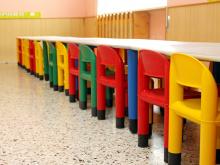
With a new school year upon is us it's appropriate to take a closer look at the troubling and complicated relationship between our nation’s public schools and its criminal justice system.
Growing up in an economically challenged neighborhood in Detroit, it still pains me to remember the sheer number of kids, disproportionately African-American boys, who passed through the juvenile detention system and would later go on to either spend time in prison or who are still in prison now. America’s criminal justice system was omnipresent.
The sad fact is that not much has changed. It’s actually gotten a whole lot worse. America represents less than 5 percent of the world’s population but we have 25 percent of the world’s prisoners. Since the 1970s our prisons have grown by 700 percent. This growth has been most explosive and disproportionate among people of color. Looking at males over the age of 18, 1 out of every 15 African-American men and 1 in 36 Hispanic men in the United States are currently incarcerated. Meanwhile, only 1 in every 106 of white males over 18 are behind bars.
It’s tough to ignore the glaring racial disparities at the center of America’s prison industrial complex. As an African-American woman, Christian, and mother, it breaks my heart and, at times, even tests the limits of my faith. But I also believe in a faith that can move mountains. When it comes to our nation’s criminal justice system, we’ve got mountains to move.
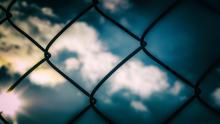
I walked across the school yard and through the ominous painted doors of St. Athanasius Elementary School for the first time. My mother and I had walked hand in hand the long city block from home to the school, across the school yard, through the entrance, down the hallway, heels now echoing against linoleum and lockers as the smell of chalk and mimeographed copies wafted from each classroom we passed.
We entered my second-grade classroom where I was greeted by the teacher who told me to take my seat four heads from the front. That seat was my second home for half of every day for a year.
I had high hopes for second grade. At the very least, I hoped it would be safe. It wasn’t.
The girl who sat behind me demanded 25 cents per day to be my friend — or else. But worse, the white woman charged with teaching our classroom full of African-American children ruled us as if we were in her military camp … or worse… prison.
My teacher once punched me in the back because I forgot to hand in an assignment — in second grade.
Now take that single act of aggression and magnify it: a punch in the back becomes a suspension, an expulsion, or an arrest. Then systematize it. Call it a “Zero Tolerance” policy and spread it across 90 percent of schools in the United States. Then apply the policy inequitably, such that African-American children are punished at higher rates and more severely than white children. That is what happened when the culture of severe punishment promoted by the Tough on Crime movement permeated education systems throughout the 1990s.
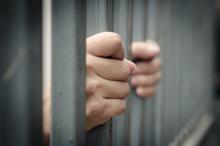
“Capital punishment is against the best judgment of modern criminology and, above all, against the highest expression of love in the nature of God” (Dr. Martin Luther King Jr.)
I despise labels, but I guess you can’t get away from them. For example, I am called an American (a label). I would prefer to be called a United States Citizen because the term “American” is ethnocentristic. The term should mean I am part of the American continents, but it is never used that way. “American” is almost always used to refer to a person who lives in the United States. However, Canadians and Mexicans are also Americans; and so are Hondurans and Brazilians.
I wish I could simply be called “Christian.” But that label necessitates the need for additional labels. Am I Protestant or Catholic? Am I orthodox or neo-orthodox? Am I a fundamentalist, an evangelical, or main-line? Am I emergent, traditional, liberal, progressive, or contemporary? To which denomination do I belong, or am I non-denominational? Maybe I am inter-denominational? Am I charismatic or cessastionist?
It’s maddening!
My preference would be to be called a follower of Jesus. But what does that mean?
Then there are political labels … and they are the worst!
Am I conservative or liberal? Am I a Republican or Democrat or Independent or Libertarian or something else? Am I pro-life or pro-choice? Am I a patriot or and antagonizer? Am I a capitalist, socialist, or communist? Where do I stand on gun rights? What about human rights, or same-sex marriage, or LBGT issues, or immigration, or Obamacare, etc., etc., etc … blah, blah, blah …
Why can’t I just be me?
It’s a lost cause. No matter how hard I try not to be boxed in, people label me. So, let me give you my best shot at who I am based on labels. (Of course, if your definition of the labels is not the same as my definition, then we will have a hard time communicating.) Here goes:

There comes a time in every society when it must face its shadow side — and deal with it.
Societies have myths, legends, and superheroes that lay the foundations for national identity, reinforce beliefs about the self and the other, and shape nations’ collective memory. They exist to make us feel good about ourselves, but as a result, they lie to us and distort collective memory.
As prophets did in the days of abolition, the anti-lynching movement, and the Civil Rights movement, modern-day leaders, like Michelle Alexander, have traversed the country shining light on the myth of equal justice in our justice system.
And on Tuesday, the unlikely duo of Sens. Cory Booker (D – N.J.) and Rand Paul (R – Ky.) joined together to address this myth by introducing the REDEEM Act.
"I will work with anyone, from any party, to make a difference for the people of New Jersey, and this bipartisan legislation does just that," Booker said in a news release. "The REDEEM Act will ensure that our tax dollars are being used in smarter, more productive ways. It will also establish much-needed sensible reforms that keep kids out of the adult correctional system, protect their privacy so a youthful mistake can remain a youthful mistake, and help make it less likely that low-level adult offenders reoffend."
Daneil Beaty performs “Knock Knock,” a powerful poem that tells the story of his father’s incarceration.

“I AM A storyteller,” says Daniel Beaty, “and my purpose in the world is to inspire people to transform pain to power.”
He was first inspired to share his stories when his third-grade teacher showed a videotape of Martin Luther King Jr.’s “I Have a Dream” speech. Now as a writer, actor, singer, teacher, and motivational speaker, his storytelling is expressed in a dizzying array of different forms and outlets. The week in April that Sojourners’ editorial assistant Rebecca Kraybill interviewed him, Beaty was doing daily performances in Los Angeles of a one-person play he wrote on the life of performer and activist Paul Robeson, “The Tallest Tree in the Forest” (in which he plays 40 characters and sings 14 songs) and, during the day, taping for a Ford Foundation-funded documentary on work he does with children of incarcerated parents.
This was just a fortnight after Beaty finished a six-week speaking tour in support of his memoir, Transforming Pain to Power: Unlock Your Unlimited Potential (Penguin-Random House). He’s also the author of a children’s book released in December 2013 by Little, Brown and Company, Knock Knock: My Dad’s Dream for Me, with graphics by award-winning illustrator Bryan Collier, which is an adaptation of a poem Beaty wrote about his experience growing up with an incarcerated father. “Knock knock down the doors that I could not” is one especially poignant line the father in the book writes to the son; it carries a call to healing and liberation that is found in all of Beaty’s work.
Kraybill talked with Beaty about the effects of mass incarceration on families, the power of a “theater sanctuary,” and how the arts call us toward “the capacity to do better.”
1. Awakening:
It is impossible to build a transformative movement for justice if people remain in the dark about the magnitude of the crisis at hand, its origins, and its racial, economic, and political dimensions. I wrote The New Jim Crowbecause I strongly suspected that most people simply had no idea what was really going on and that education was a necessary prerequisite to effective action. I still believe that’s the case, and so urging people of faith and conscience to commit themselves to raising the consciousness of their congregations and communities is extremely important.
Encourage people to hold study groups, film screenings, public forums, and dialogues to help others awaken to what has happened on our watch and become motivated to join the movement. The Unitarian Universalists, the Samuel DeWitt Proctor Conference, Veterans of Hope, and PICO are all engaged in consciousness-raising work and have created study guides based on The New Jim Crow and other resources.
2. Building an Underground Railroad:
Obviously, consciousness-raising is not enough—we will have to get to work. In my view, that necessarily involves building an “underground railroad” for people trying to make a break for true freedom in the era of mass incarceration and who desperately need help finding shelter, food, work, and reunification with their families.